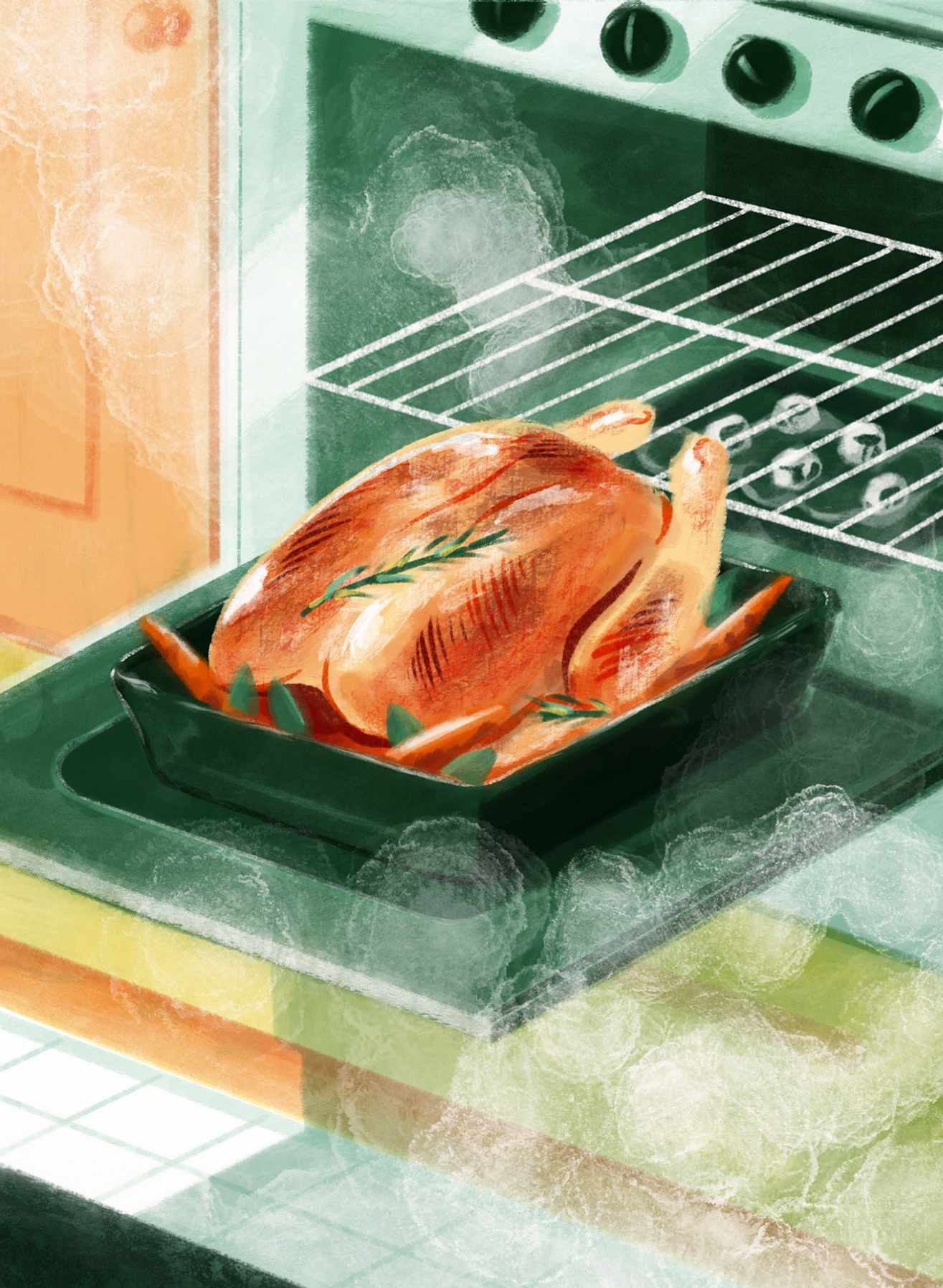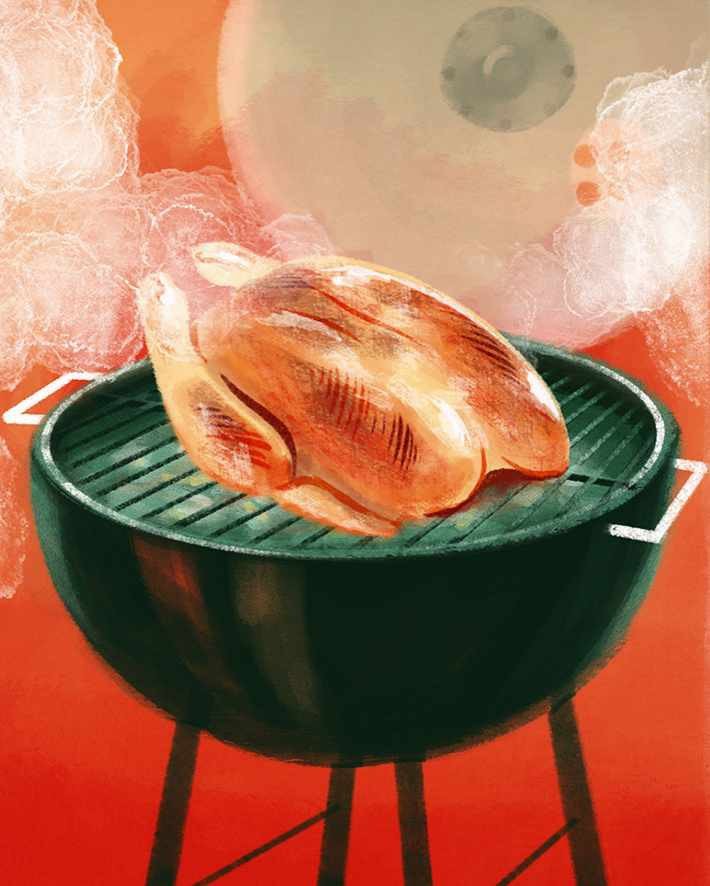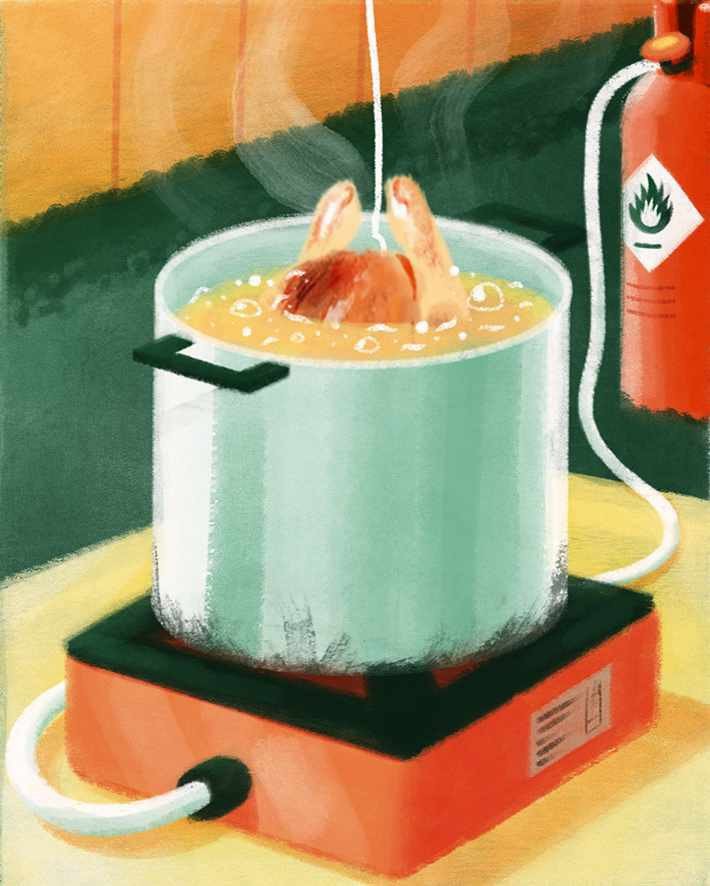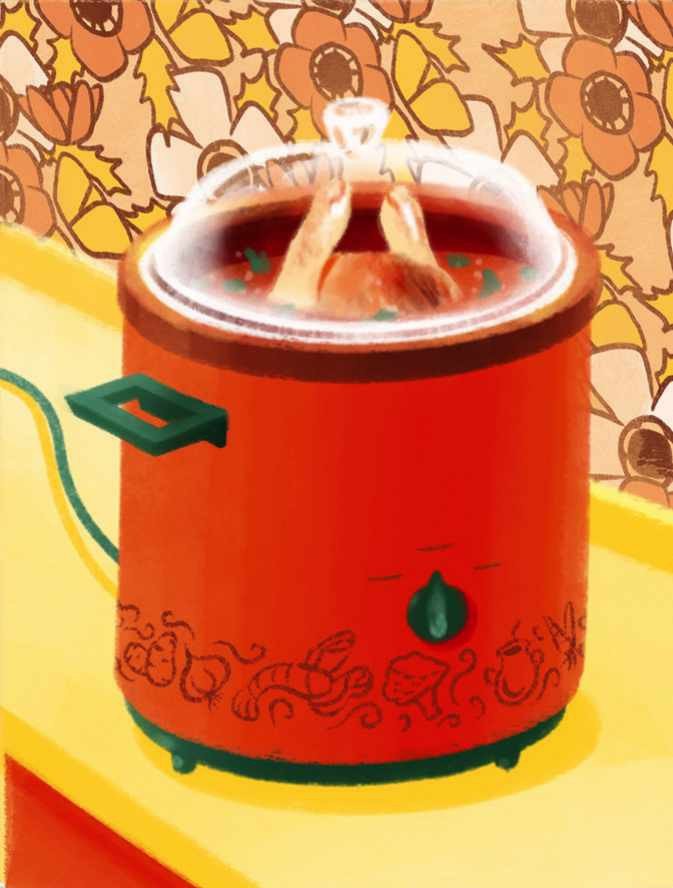WHAT’S THE MOST COST-EFFECTIVE WAY TO COOK THE CHRISTMAS TURKEY?
YES! IT IS STILL POSSIBLE TO ENJOY A SUCCULENT BIRD WHEN YOU’RE WATCHING YOUR ENERGY BILLS
In the seven or so years that I have been the food scientist for BBC’s Inside The Factory, the episode that had people stop me in the supermarket was the Christmas special where I gave my top science-based tips on cooking the perfect Christmas turkey. In these times of rising fuel prices and climate concern, however, it feels more important than ever to pick a way to cook your prized bird in a way that makes for a killer dish without murdering the planet or your bank account. For more tips on cooking a turkey in the oven, visit bit.ly/cook_turkey_science
OVEN ROAST

If you’re cooking a roast this Christmas, you’ll probably be doing it in the oven. From a physics point of view, oven roasting is a ridiculous way to cook anything. Your oven is essentially a hot, dry chamber that blows air around, just like a hairdryer, and is perfect for dehydrating rather than cooking. This is because heat transfers pitifully slowly from dry air into anything solid or liquid – just try hovering your hand in a 200°C oven and it will feel warm, whereas a mere splash of 80°C water would instantly scald.
It’s going to take roughly three hours and 30 minutes of preheating and cooking time to roast a 6kg turkey (enough to feed 8-10 people). Modern electric ovens will fizzle through some 3.2kW worth of power during this time, sending up a 600g plume of carbon dioxide. Gas oven owners have a less efficient appliance that will blaze through 5.4kW worth of gas, belching out nearly a kilogram of carbon dioxide. A gas-cooked bird will have a lower energy bill, however, such is the price of electricity now.
For a tastier turkey and a faster result, try spatchcocking. This means cutting out the turkey’s backbone using a serrated knife or pair of heavy-duty kitchen scissors then squashing the bird flat in a large roasting tin, skin side up, so its limbs are butterflied outwards. The surface area is doubled and the cooking time roughly halved. The most flavourful bits of the turkey are the browned outer edges formed by the Maillard reaction, and a spatchcocked bird has more of these tasty surfaces, making it extra delicious.
Cost: £ (54p for gas) /££ (£1.08 for electricity)
Emissions rating: •• (0.98kg CO2 for gas)/ (0.6kg CO2for electricity)
Tastiness rating: ★★ (whole) / ★★★ (spatchcocking)
BARBECUING

You may not live in Australia, but a Yuletide barbecue might not be as silly as it sounds, if the weather stays dry on Christmas Day. To barbecue a large bird, you will need to turn the barbecue into an oven. You’ll therefore need a large barbecue, lots of charcoal, and a tight-fitting lid with air vents so that hot air and smoke can circulate. Wait until the charcoals are covered in a good layer of ash and giving out maximum heat before starting. Place a foil tray under the turkey to catch the drips for gravy-making, if you like. With air vents three-quarters open, cook until the meat reaches 65°C, when measured using a meat thermometer. This may take two hours or more.
Charcoal is a rather dirty fuel, which, along with firelighters, means a barbie will send an estimated six to seven kilos of carbon heavenwards, equivalent to a 32km (20-mile) car drive, although about 40 per cent of that will be offset providing the charcoal is made from a sustainable wood source (which would be carbon neutral). A gas barbecue emits a third of that carbon, according to research using UK data. That said, gas is a fossil fuel and it won’t impart the lip-smacking smoky flavour, which is surely the main reason for braving the outdoors?
Cost: £££ (approx £3 for charcoal) / £££ (£3.50 for gas)
Emissions: •••• (3.25kg CO2for charcoal) / •••• (2.2kg CO2for gas)
Tastiness: ★★★★ (for charcoal) / ★★★ (for gas)
DEEP FRYING

The unlikely winner in the league table of turkey tastiness is deep frying. Yes, you read that right: plunging an entire turkey into a pot of perilously hot oil. In the US, it’s a common Thanksgiving party trick, where you can pick up a turkey fryer for less than 50 bucks. In Blighty, expect to pay double that. Or you could cobble one together with a propane tank, large ring burner, 30-litre metal stockpot and a coat hanger. Exercise extreme caution in this white-knuckle cooking venture: every year in the US the process kills five people, injures 60 and causes £10m worth of damage. After you have factored in 20 litres of oil to keep your bird submerged, it’s also pricey. Oh, and if it’s wet or snowy, you can forget it – hot oil and water have an explosive relationship.
For the brave (foolhardy?) who dare this technique, the spoils are delicious. Unlike the Sahara-like conditions of an oven, heat travels at lightning speed from oil to meat, meaning the whole bird is cooked in under an hour in oil at 175°C. Most of the moisture is also unable to escape, leaving a more succulent bird, and the Maillard reaction is sent into overdrive throughout the cooking period, creating that unmistakable fried-chicken crispy skin. The toll on the planet from a roaring propane tank is worse than a gas oven (although not as bad as charcoal).
Cost: £££££ (£35-40 for oil, although it can be reused)
Emissions:••• (1.4kg CO2)
Tastiness: ★★★★★
SLOW COOKING

This 1970s gadget had a new lease of life in the 2010s when home cooks went in pursuit of more wholesome cooking. And now they’re flying off the shelves once again as we all look to cut our energy bills. These delightfully simple contraptions heat their contents to a steady temperature for as long as the user desires. On a ‘low’ setting of 88°C, a slow cooker will gently bring meat and veg beyond their cooking temperatures: meat proteins cook at around 65°C, while plant cell walls break down and starches cook at a similar 58°C to 66°C. Cooking for six to eight hours also gives ample time for tough sinews (made from collagen) to break down into soft gelatine, transforming tough cuts of meat into tender fall-off-the bone succulent loveliness. Hands down this is the most energy-efficient way of doing your festive centrepiece, emitting a puny 230g of CO2. That said, shoehorning your 6kg bird inside may be a squeeze, leaving little space for the veggies. The meat will be moist throughout, thanks to the steamy cooking climate, but the skin will be flabby and bland because the surface has had no chance to dry out and reach the 130°C+ needed for the Maillard reaction to fire up. Good for sandwiches this may be, but a slow-cooked turkey will not be crowdpleaser without a truly delicious gravy and some cracking roast potatoes.
Cost: £ (40p)
Emissions: • (0.23kg CO2)
Tastiness rating: ★★